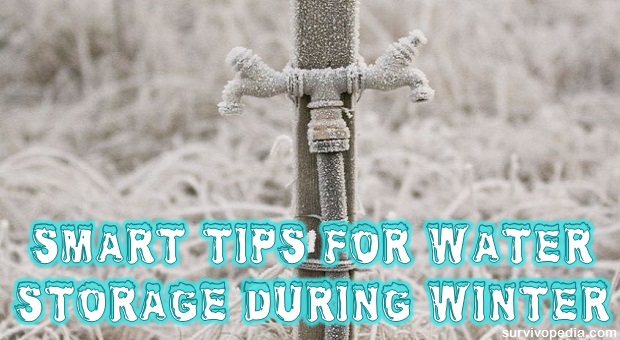
While some people are busy claiming that the planet is heating up, many of us are facing record cold winters. If you have never dealt with frozen pipes and other difficulties in a routine setting, it will be even harder for you to maintain a supply of running water in winter months during a crisis.
Important Tools and Equipment to Have on Hand
Fortunately, there are many reliable methods available for storing and preparing your water pumps and pipes for cold weather regardless of where you live and the situation at hand.
You just need a little preparation, and also some tools at hand.
- Propane torch – can be used to defrost copper and metallic pipes. It can also be used to defrost pump switches on older models that do not have plastic or other flammable parts.
- Hair dryer – can be used to melt ice in pump switches, as well as in plastic, metal, and other pipes.
- Incandescent lamps or heat lamps to generate steady heat without fire
You also need some freezing preventative equipment and materials:
- Fiberglass insulation (without paper backing) – use insulation and a wooden box around the pump and pipes leading into the house.
- Heat tapes – wrap these tapes around pipes, especially near the pump and any area where the pipe may be exposed to freezing temperatures.
Prepare also some alternatives to electric water pumps:
- Cast Iron Hand Pumps – These “old fashioned” pumps can retrieve water up to 300 feet below the surface. They can be installed along with electric pumps and used when needed. Never touch a cast iron pump handle in cold weather with bare hands, as it can rip the skin and flesh from your hands.
- Ram Pumps – This is another “old fashioned” pump design that requires no electricity. As long as you build it from metal parts, it will be easier to manage freeze ups. Just be sure to have some non-frozen water on hand for priming as needed.
Things to Beware of When Preparing Pipes
It is very important to keep in mind that water is one of the few substances that expands when converted from the liquid to solid state (ice). Even though water may move freely through pipes without damage, ice will break them apart because of the expansion.
Therefore, when preparing pipes for winter, it is always best to err on the side of safety and insulate them as much as possible.
You can use insulation around the pipes, and also heat tape for added warmth. Depending on the area, you may also need to move pipes into the home where they will not be exposed to freezing temperatures under the house. Needless to say, you will also need to take special care to insulate pipes coming out of the pump.
Keep Water Running on Freezing Days
In many cases, if you can manage to keep water running through pipes, it will not freeze up. On cold nights, let warm water drip through faucets so that the lines remain ice free.
You may also want to hook up a smaller water storage tank, and switch over to that so the pump goes on more often. That said, if temperatures fall quickly, you may wind up with a frozen system if the pump freezes up with water still in the lines.
If you need to thaw pipes out, start off by turning on at least one water faucet. This will help draw water through ice patches as soon as they begin to melt. Depending on the pipe material and surrounding materials, you can use either a propane torch or a hair dryer. As long as there is nothing flammable in the area, the torch will work faster and better.
Take Care of Your Water Pump
As with water pipes, it is very important to insulate pumps and keep them in temperatures above freezing. You can use fiberglass insulation around the pump, and also heating tape to provide extra warmth. Unfortunately, some areas of the pump, such as the switch are difficult to insulate. You can try keeping an incandescent lamp shining on it, or provide some other heat source to prevent freezing.
Video first seen on Home Dash Wizard Dot Com’s Channel
Control Winter Water Usage
The best way to reduce or control winter water usage is to make sure that you are saving as much water as possible throughout the year. This includes:
- Always stop up leaks by repairing or replacing valves and pipes as quickly as possible.
- Use governors and other water saving faucets.
- Place a half gallon bottle of water in the toilet to reduce the amount of water used for each flush.
- Wash dishes by hand instead of using the dish washer.
Ways to Store Water in the Winter
No matter how hard you try, there are bound to be times when the pump or pipes will freeze. Rather than wind up with no water at all, you should always keep a few gallons of water on hand in a warm room.
If you do not have plastic jugs, then simply fill up the coffee pot, or any other pots that you may have on hand. You can also fill up the bath tub for washing water and a few gallon pails for the toilet.
Oddly enough, you may also want to keep some blocks of ice stored in sawdust. Even though the ice will need to be melted back into water, hauling in a chunk of ice may be easier and faster than dealing with extensive pipe or pump repairs. Needless to say, if there happens to be snow on the ground, you can also melt that down for water.
This article has been written by Carmela Tyrell for Survivopedia.




